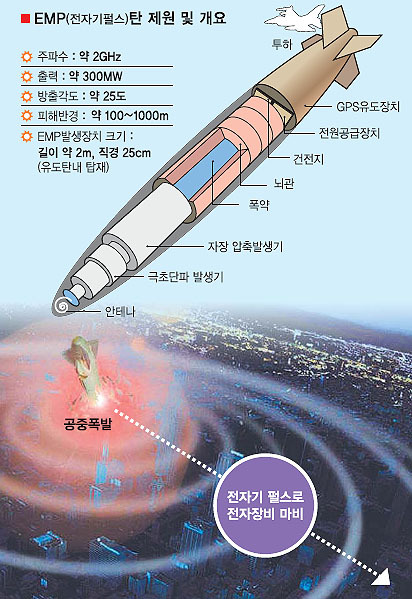Electromagnetic pulse (EMP) is basically a short burst of electromagnetic energy. It can be generated by a variety of sources, both nuclear and non-nuclear. Non-nuclear EMP (NNEMP) has been the subject of substantial research & development (R&D) by the Chinese for developing usable weapons that can target enemy electronics and electrical infrastructure. It is believed that the Chung-Shan Institute of Science and Technology (CSIST) has been working on EMP technology for many years now.
Nuclear EMP too has seen a lot R&D activity in China, but it is NNEMP that we must focus on, since that has tactical applications and is considered by the Chinese to be a weapon that can be used without eliciting a nuclear response from any adversary. So, the Chinese basically see NNEMP as a ‘below nuclear threshold’ weapon and therefore actually usable in a conflict.
For the Chinese, the preferred source to generate NNEMP relevant to tactical operations is the explosively pumped flux compression generator (EPFCG), which as the name suggests requires chemical explosives to generate an EMP. Chinese EPFCG yields are probably ‘standard’ in that they should be capable of generating electrical discharges to the tune of tens of mega joules in ten to hundreds of microseconds of time in a relatively small package that can be mated with vectors even as compact as a 155 mm artillery shell. Other vectors of interest would be ballistic missiles, cruise missiles and aerodynamic glide bombs.
In any case, NNEMP warheads suitable for carriage by Chinese DF-21 ballistic missile variants are believed to have been developed. An obvious target for a NNEMP armed DF-21 would be unshielded electronics in enemy command & control (C&C) centres. Chinese military documents have themselves delineated what the advantages of a successful EMP weapon could be:
- Speed of light, all weather attack
- Area coverage of multiple targets
- Selected levels of combat
- Minimum physical damage in politically sensitive environments
- Simplified pointing and tracking
- Deep magazines and low operating cost.
The Chinese are also known to be working on Explosive Driven Magneto Hydrodynamic Generators (MHD), as EMP sources.
HOWEVER: Chinese researchers in 2005 conducted a study to assess the influence of EMP on cardiomyocytes. i.e heart cells. They found that after exposure to EMP radiation, heart cells either pulsate slower or actually stop pulsating altogether. Cell conformation becomes abnormal, cell viability declines, and the percentage of apoptosis and necrosis increases significantly. The results indicated that cardiomyocytes are rather susceptible to non-ionizing radiation. EMP, as such, can do great damage to cell conformation, structure and function. Basically, this Chinese study showed that the heart will be unable to function as well as it should, and complications could include death or serious damage to the heart for anyone exposed to significant EMP radiation. EMP exposure could lead to long term disability in those most susceptible, such as the elderly, the very young, and the unborn.
Given these facts, it is possible that China has been looking for areas beyond Chinese territory to conduct covert EMP experiments. It is known that China, Pakistan and North Korea have collaborated on EMP experimentation in the past.
© Delhi Defence Review. Reproducing this content in full without permission is prohibited.
































